Olympus TG-310 Review
Olympus TG-310
Does this budget tough compact have the features and image quality to go with its bombproof exterior?
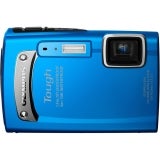
Verdict
Pros
- Tough build
- Digital filter effects
- Capable of good image quality
Cons
- Poor LCD monitor
- Buttons are small and stiff
- Panorama mode is rubbish
Key Specifications
- Review Price: £150.00
- 14-megapixels
- 3.6x optical zoom (28-102mm)
- Waterproof to 3m
- Shockproof to 1.5m
- Freezeproof to -10°C
- 3D mode & digital effects filters
Olympus has played a leading role in establishing the ruggedised compact market, first with its SW series and more recently with its ‘Tough’ range of waterproof, shockproof, freeze-proof, dust-proof and generally bombproof compacts.
The Olympus TG-310 is the latest in the line and sits below its equally new stablemate, the TG-610, as the budget option for thrill-seekers and adventurers looking for a compact camera that can keep up with their lifestyle and survive to tell the tale.
Waterproof to three metres, shockproof to 1.5 metres, and freeze-proof to -15°C, the Olympus TG-310 is very much the kid brother of the Olympus Tough range, with its more expensive siblings able to out-perform it not only in terms of features, but also in terms of toughness. 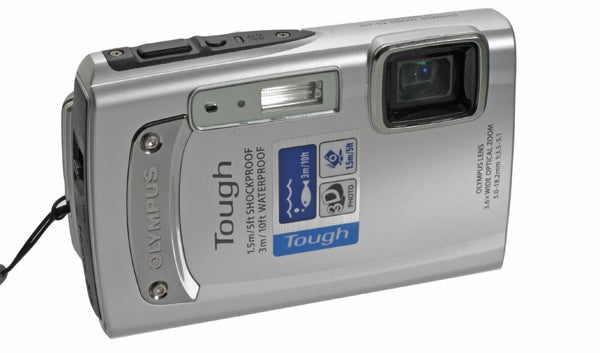
The TG-610 (£190), for example, is waterproof down to five metres, while the range-topping TG-810 (£240) can dive to 10-metres. Still, if you’re just looking for something to go snorkelling with then the TG-310 remains more than adequate.
Direct competitors to the TG-310 include the Fujifilm XP30 which offers built-in GPS, and the Samsung WP10 which offers waterproofing to three meters.
How well does the TG-310 square up to these? Is it a case of all mouth and no trousers, or is it a genuinely tough little cookie with something extra to offer. Lets take a closer look and find out.
Within its tough outer casing the TG-310 employs a 1/2.3in CCD sensor with an effective resolution of 14-megapixels, backed up by the company’s TruePic III image processor.
Sensitivity stretches from ISO 80 to 1600, while continuous shooting is limited to 1.2fps at full resolution, or 3fps at a reduced resolution of 3-megapixels. The TG-310 is equipped with a 3.6x optical zoom that offers between 28-102mm in 35mm terms. 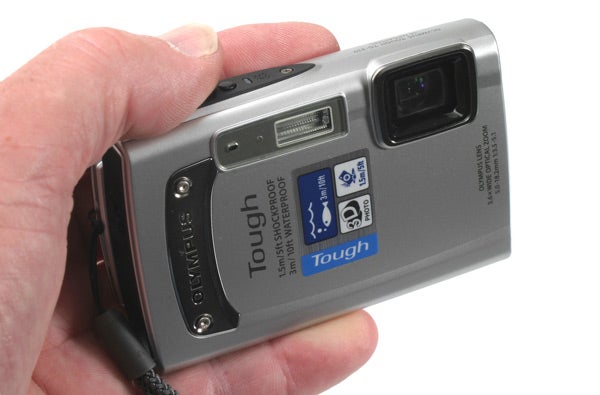
The default aspect ratio is 4:3 and resolution can be lowered from the maximum 14MP to a choice of 8MP, 5MP, 3MP, 2MP, 1MP and VGA. In addition, it’s also possible to record images in 16:9 in a choice of either high or low quality. The TG-310 is only able to record still images as JPEGs, for which it offers two levels of compression: Fine and Normal.
The TG-310 is very much in the mould of a point and shoot compact, and this is reflected by the camera’s three standard shooting modes: iAuto is the default fully automatic mode, backed up by 17 equally automated Scene modes. Program mode, meanwhile, does allow a small degree of user input in areas such as ISO, white balance and EV compensation.
That’s not to say that the TG-310 doesn’t have a couple of tricks up its sleeve. The TG-310’s most attention-grabbing feature is its ability to record 3D images in a dedicated 3D Photo shooting mode. While the 2.7in, 230k-dot LCD monitor on the back of the camera only displays in lowly 2D, we’re assured that 3D images can be viewed in full 3D on a compatible TV or monitor.
In keeping with the recent trend for digital effects filters, the TG-310 also comes with eight Magic Filters: Pop Art, Pin Hole, Fish Eye, Drawing, Soft Focus, Punk, Sparkle and Watercolour. These can be used to give images and videos a bit of a twist. Rounding things off is a Panorama mode that allows you to take multiple images, which the camera will automatically stitch together. 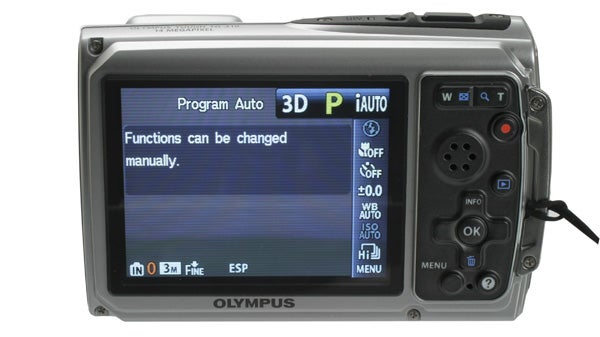
Movies can be recorded at a maximum resolution of 1080 x 720p HD, although there are also options to downscale recordings to 640 x 480 VGA or 320 x 240 QVGA, depending on their end-use and/or the amount of free memory. Sound is recorded in mono and movies are stored as MPEG-4 files.
External connectivity stretches to a mini HDMI and mini USB 2.0 port. The former allows you to hook the camera up to a HDTV or similar, while the latter can be used for transferring files or for charging the battery. The TG-310 also supports the use of Eye-Fi memory cards that allow for the wireless transfer of images between the camera and a computer.
The design of the TG-310 is very much in keeping with previous Tough models from Olympus – from purely aesthetic concerns like the exposed screws that hold the finger grip in place to more practical measures such as the sealed lens housing and sealed battery compartment.
For a camera that’s designed to appeal to active people taking pictures on the go, the TG-310 proves a surprisingly fiddly camera to operate. This is primarily because the camera’s buttons are all quite small, stiff and set behind a protective cover which makes them hard to press – we found ourselves using our thumbnail more often than not. Zoom controls aren’t particularly precise either, which makes accurate framing all the more fiddly. Safe to say that the TG-310 isn’t glove-friendly, then.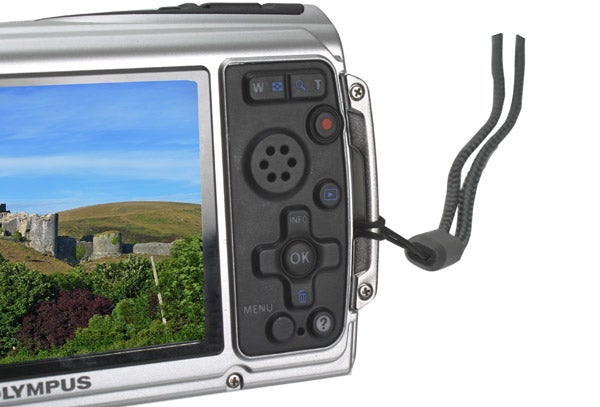
We have no real gripes with the menu system itself though as it’s neatly laid out and easy to navigate. Ultimately, the TG-310 isn’t a particularly complicated camera and so there aren’t layers upon layers of menus and sub-menus to navigate when you want to change something. As we mentioned above, the only real problem with the TG-310’s operation are its small, stiff buttons.
The TG-310 isn’t a particularly speedy camera and once it is turned on takes about two seconds before the scene registers on the rear monitor, and another couple on top of this before it is ready to shoot.
In use we did encounter some problems with the autofocus system, with the primary culprit being the iESP (intelligent Electro Selective Pattern) AF mode. In theory this proprietary system is meant to allow the camera to pick out the main subject, even if it’s not in the centre of the screen. In reality however, we found it hugely inconsistent, often picking out random objects instead.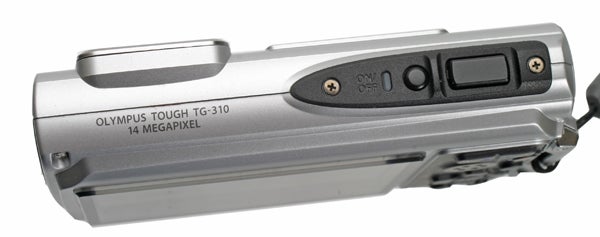
To make matters worse, iESP works alongside Face Detection and this also proves inconsistent. In fact we often found that a further two of three half-presses of the shutter button were required before the camera would recognise and focus on an obvious face in front of it. The best way to get round this problem, we found, was to keep the camera in Spot focus mode and use the central focus box alongside the trusty focus-recompose technique. This enabled us to get much better results.
Processing time between shots is just over a second, and during this time you can’t use the camera. In continuous shooting and high-speed burst shooting modes we didn’t encounter any problems with slowdown or shutdown owing to the buffer being full, which makes sense given that the camera’s write times are virtually identical to its continuous shooting abilities.
One area where the TG-310 really does fall down in terms of performance is the LCD monitor. At 2.7in and 230k-dots it just isn’t very good at all, either for composing or reviewing images with. Viewed in the shade, images appear cold, flat and lacking in either contrast or detail, while in bright sunlight the screen becomes very difficult to see at all.
Used in good light and at low sensitivities the TG-310 is capable of pleasing results. Metering is reliably accurate with the camera striking a good balance when faced by high-contrast scenes. We did, on occasion though, encounter issues with banding (posterization) usually in bright skies contrasted against darkly shaded areas.
Aside from this, colour proves fairly punchy, with the camera more than able to produce deep blues, bright reds and all colours in between given good lighting conditions. We didn’t experience any problems with the automatic white balance setting either, meaning there was no need to manually change colour temperature while shooting.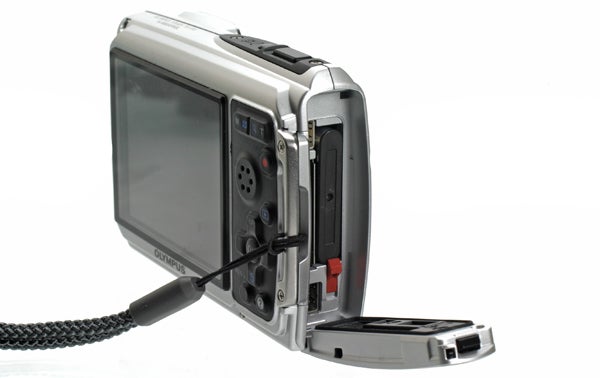
Edge sharpness is pretty good for a camera of this price, as it detail. Of course blowing images up to 100% and beyond does reveal a slight loss/smoothing over of detail during the processing and compression process, although at smaller sizes (fior example a 150-inch laptop screen or an A4 print) there’s plenty enough resolution. We doubt many people will be using the TG-310 to print billboard sized posters with.
While lower sensitivities display only a modicum of image noise, performance at higher sensitivities does tail off quite considerably with ISO 800 and above displaying visible noise even at smaller image sizes. In addition, using the top settings also results a fair amount of colour degradation images.
Without a 3D monitor or TV to hand we didn’t have a chance to test the 3D imaging capabilities of the TG-310, however we can report that the Panorama mode is a real let-down with poor stitching leading to disjointed images that are, more often than not, barely usable. The various digital effects are very much a matter of personal taste so we won’t comment on them.
VERDICT
Given its 3D shooting abilities, digital filter effects, tough build and competitive price the TG-310 certainly holds some appeal. While image quality certainly isn’t bad, we do have some reservations over inconsistent AF performance and the camera’s overly small and stiff controls. Ultimately though, the TG-310 remains worthy of consideration if you’re looking for a ruggedised camera on a budget.

ISO 80

ISO 100

ISO 200

ISO 400

ISO 800

ISO 1600

Pop Art

Pin Hole
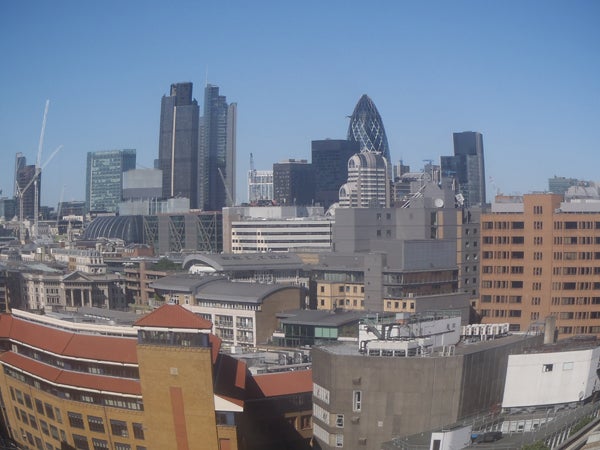
Fish Eye

Drawing
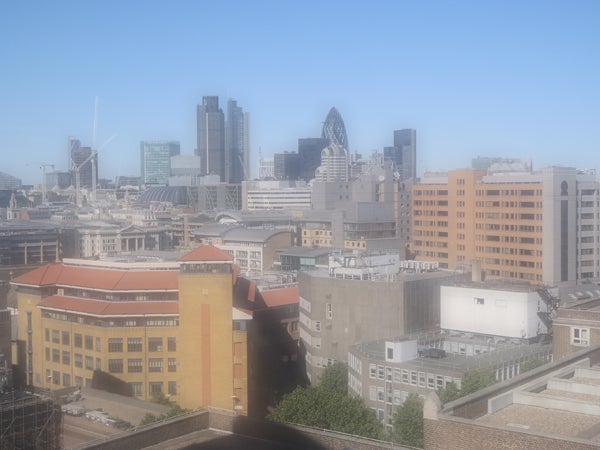
Soft Focus

Punk

Sparkle

Watercolour
Trusted Score
Score in detail
-
Value 8
-
Design & Features 7
-
Image Quality 6
-
Build Quality 8
Features
| Camera type | Digital Compact |
| Megapixels (Megapixel) | Megapixel |
| Optical Zoom (Times) | 3.6 Xx |
| Image Sensor | CCD |
| Image Stabilisation | Optical, Electronic |
| LCD Monitor | 2.7 in |
| Flash modes | Auto Flash, Flash ON, Flash OFF, Red-eye Reduction |
| Video (max res/format) | 1280 x 720 |

